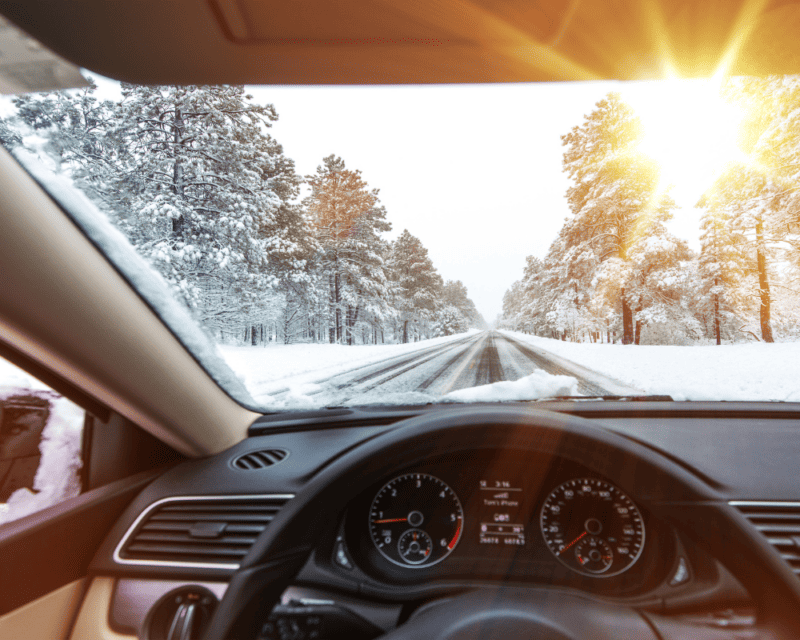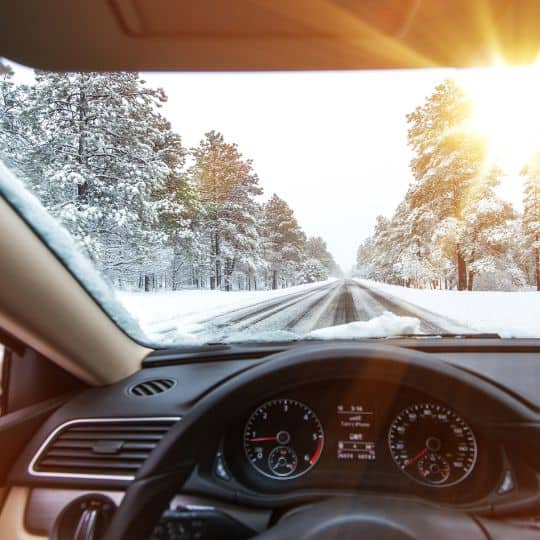The winter is usually a time of great excitement for families. The holidays are just around the corner, and everyone’s getting cosy for the cold days ahead. Unfortunately, as a parent, you know that the winter weather can present some challenges, too.
One of these is keeping you and your children safe when you’re driving. The winter tends to bring pretty hazardous road conditions. It can also have negative effects on the integrity of your car.
So, let’s take a look at a few of the steps you need to take to ensure car safety this winter.
Regular Inspections

Preventing safety issues is always going to be better than having to react to them. It can certainly feel as though, as a parent, you’re always preventing some kind of disaster or other. While another activity to add to your plate might feel overwhelming, a few regular preparatory efforts throughout the winter can make a big difference.
One important area of focus for your safety checks is your tyres. The condition of your tyres affects how reliably they grip the surface in wet or icy conditions. Not to mention that cold weather causes drops in tyre pressure. Check the treads, and the surface for signs of damage and the air pressure every two weeks.
Alongside the tyres, checking your fluids can prevent damage that may otherwise result in risks. Ensure you’re using motor oil with a viscosity that’s appropriate both for your vehicle and the winter weather. You can usually find this information in your car’s manual or from a local mechanic. You must also frequently confirm the levels of your power steering and brake fluids, as these can affect the control you have over your vehicle.
It’s also important to regularly check that your car is loaded with an emergency kit you and your children might need in a difficult situation. This should include a high-visibility jacket in case of a breakdown during the darker days. A fully stocked first aid kit is good for any minor injuries during accidents. Plenty of water, healthy snacks, and warm blankets can keep out the cold during times when you may need to wait for roadside assistance.
Keeping the Cold at Bay
Often, the best thing to keep your vehicle from becoming unsafe is to avoid leaving it out in the cold. Overexposure to poor weather conditions can affect how your car functions and its overall safety. The batteries can drain, ice may develop in tyre treads, and engine fluids can freeze. This can put you and your child into precarious situations on the road. Therefore, it’s wise to store your vehicle when it’s not in use.
Putting it inside a garage tends to be the most effective option. If you’re able to do this, you should make sure that the space effectively keeps out the cold. Check that there is sufficient insulation in the garage. Arrange to seal any cracks. Make sure you keep any windows in the space closed.
If you don’t plan on driving for longer periods of time, you’ll need to prepare your car properly for storage. Filling your tank with fuel can prevent moisture build-up that can lead to freezing issues. Properly inflate your tyres and — if possible — put your car on jack stands to minimize the potential for flat spots. It’s also wise to use a car cover that both insulates the vehicle from cold and keeps pests at bay.
Driving Mindfully

Car journeys can be particularly risky for you and your child in the winter. Different types of extreme weather could impact the driving experience. Snow, ice, and water can affect tyre traction, which may hamper your ability to brake. Rain and fog might limit your visibility. Poor weather conditions can also cause unexpected damage to the road. While you can’t stop these issues from occurring, the one thing you can control is your approach to driving.
Taking a more defensive driving stance can keep you and your kids safe. Some of the actions to adopt include:
- Staying slow: Driving fast can make it more difficult to brake in time during icy or poor visibility conditions. Avoid pushing the speed limit.
- Maintain vigilance: The winter can present various hazards. These may be in the form of debris and even other drivers’ behaviour. Stay alert so you can spot and respond to these effectively.
- Avoid using cruise control: Many cars today are loaded with driver assistance tech. It’s important not to rely on cruise control when you’re driving in winter weather. If your cruise control is set to too high a speed, you may find this leads to skidding or spinning during icy or wet conditions.
- Increase your following distance: Icy or wet conditions mean it will take longer for your car to stop after you brake. Therefore, you should extend the following distance between you and the vehicle in front to give yourself that extra time to stop.
Alongside your driving, it’s also important to adjust the conditions inside your car. Kids can occasionally be rambunctious, which is perfectly natural. However, in winter conditions, this behaviour presents additional distractions you don’t need. Take the time to talk to them about the importance of letting you concentrate. Perhaps reward their good behaviour with a winter treat.
Conclusion
Navigating the challenges of the winter is essential for keeping your family safe during car rides. You need to commit to regular preventative measures alongside adjusting your approach to driving. It’s important to remember that there can be specific safety issues related to the areas you’re driving and the type of car you own. Be sure to take additional steps to tailor your approach to your family’s unique needs. With some attention, you can enjoy safe journeys throughout the season and beyond.

